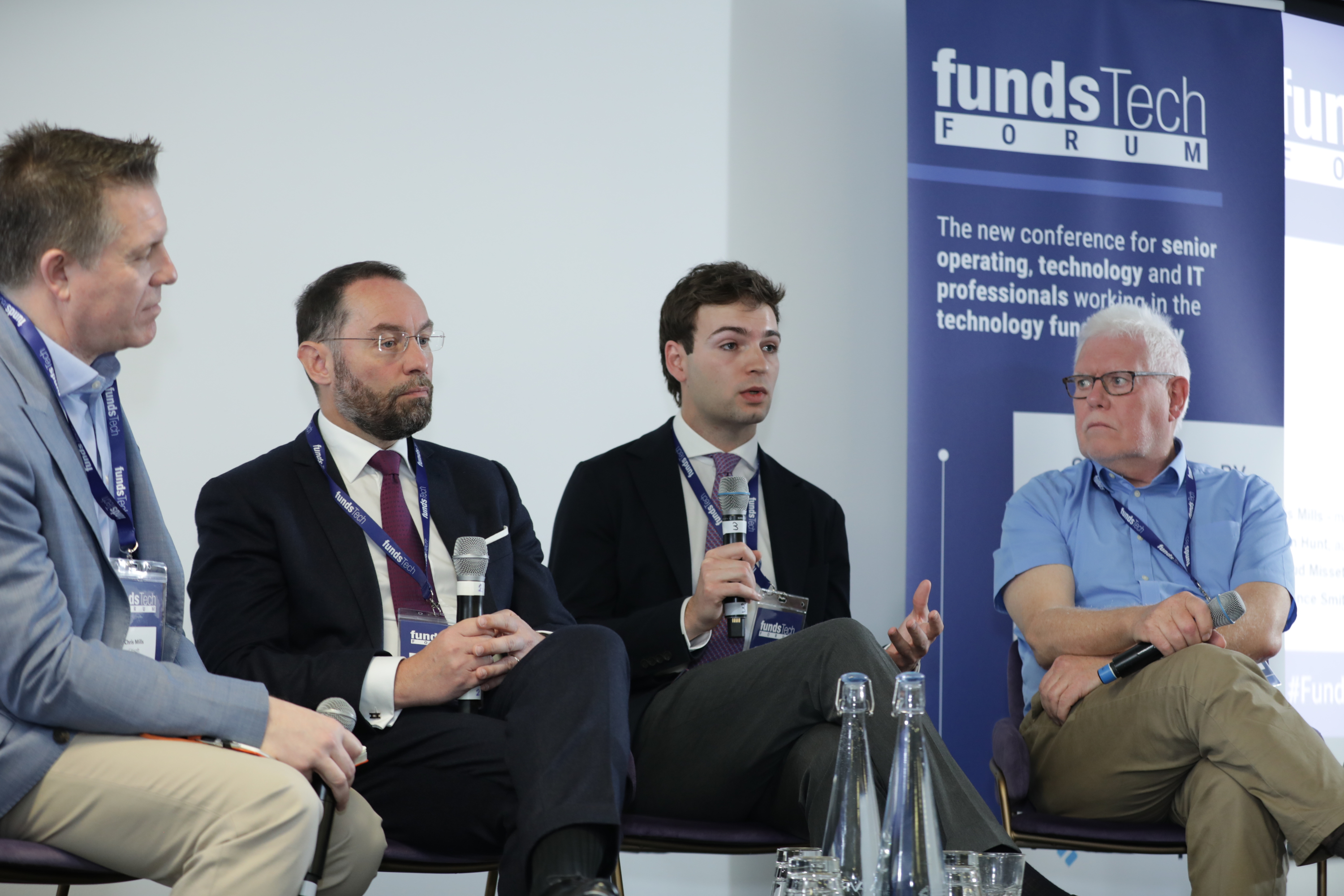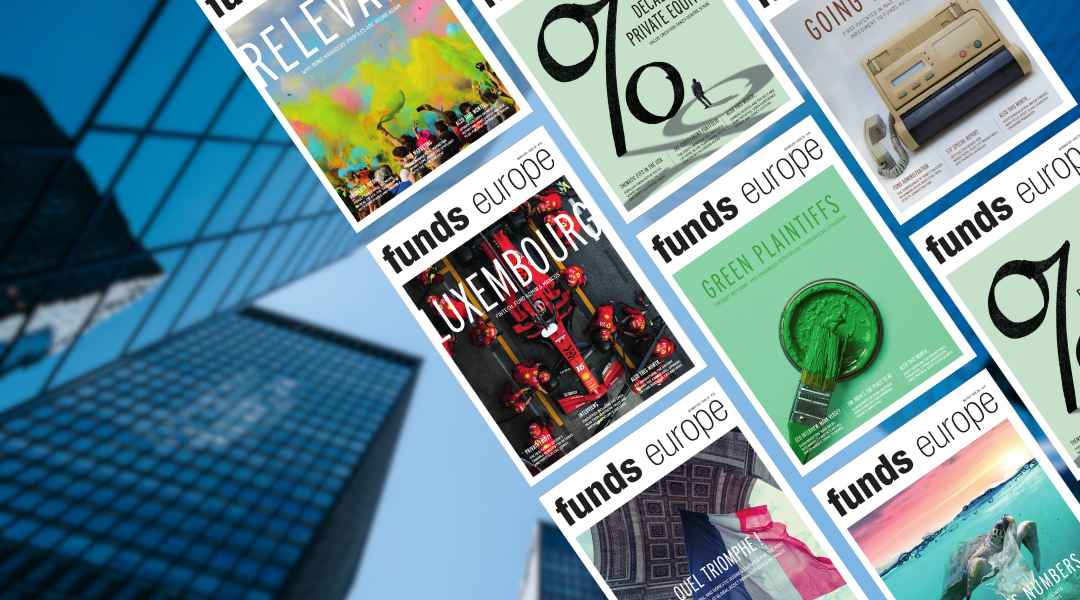 Funds Global Asia talks to Calastone’s Leo Chen about the growth of wealth management in Southeast Asia and the emergence of new models.
When the Southeast Asian super-app Grab launched its first micro-investment service, AutoInvest, earlier this year, it not only showed the growing interest in wealth management across the region. It also demonstrated the impact of non-traditional players, such as Grab, on the financial services market.
This impact can be most clearly seen in the emergence of new operating models for wealth and investment management that take their lead from e-commerce as opposed to private banking.
Fund transaction network Calastone has been key to promoting more automation in the funds industry worldwide and has been expanding its footprint in Southeast Asia specifically of late. After establishing itself in primary markets such as Hong Kong, Singapore and Taiwan, it is now developing a presence in both Malaysia and the Philippines.
Some of its latest clients in the region include traditional asset and wealth managers such as Allianz PNB Life, Manulife Investment Management, UOB Asset Management, Principal Asset Management and GrabInvest.
According to Leo Chen, managing director and head of Asia, the growth of wealth management is a natural evolution for growth nations – when individuals become wealthier, they buy insurance and insurers have gradually started to push them towards managed funds and other investment vehicles.
But the democratisation of wealth management does create some processing challenges that can only be solved by the use of automation, says Chen. “When it comes to micro-investing, a fee of $20 per transaction in transfer agency costs doesn’t stack up.”
At the same time, wealth managers, fund managers and transfer agents are also looking to offer a wider variety of products beyond simple, equity-based mutual funds in order to provide more balanced and diverse portfolios.
Again there are operational and costs consequences that come with greater diversification, says Chen. “Cash-related products have lower management fees because they are relatively easy and cheap to trade. But when you look at less liquid products and asset classes, the costs go up significantly.”
So, wealth managers are left asking how they can offer a more diversified portfolio that is accessible to a broader range of investors without incurring crippling costs.
The only answer is through the use of technology and automation. By connecting trading systems to the Calastone network via APIs, digital wealth platforms like GrabInvest can have more control over their positions via on-demand access to all their trading data at a low cost. It also enables them to adapt to market changes and devise new business models.
As Chandrima Das, Head of Wealth, Grab Financial Group, says: “GrabInvest is constantly looking for ways to bring value to our users as the digitalisation of financial services accelerates with accessible solutions. Our partnership with Calastone helps us to design a more seamless and secure experience in order to automate our processes efficiently for our users.”
Robo-innovation
Funds Global Asia talks to Calastone’s Leo Chen about the growth of wealth management in Southeast Asia and the emergence of new models.
When the Southeast Asian super-app Grab launched its first micro-investment service, AutoInvest, earlier this year, it not only showed the growing interest in wealth management across the region. It also demonstrated the impact of non-traditional players, such as Grab, on the financial services market.
This impact can be most clearly seen in the emergence of new operating models for wealth and investment management that take their lead from e-commerce as opposed to private banking.
Fund transaction network Calastone has been key to promoting more automation in the funds industry worldwide and has been expanding its footprint in Southeast Asia specifically of late. After establishing itself in primary markets such as Hong Kong, Singapore and Taiwan, it is now developing a presence in both Malaysia and the Philippines.
Some of its latest clients in the region include traditional asset and wealth managers such as Allianz PNB Life, Manulife Investment Management, UOB Asset Management, Principal Asset Management and GrabInvest.
According to Leo Chen, managing director and head of Asia, the growth of wealth management is a natural evolution for growth nations – when individuals become wealthier, they buy insurance and insurers have gradually started to push them towards managed funds and other investment vehicles.
But the democratisation of wealth management does create some processing challenges that can only be solved by the use of automation, says Chen. “When it comes to micro-investing, a fee of $20 per transaction in transfer agency costs doesn’t stack up.”
At the same time, wealth managers, fund managers and transfer agents are also looking to offer a wider variety of products beyond simple, equity-based mutual funds in order to provide more balanced and diverse portfolios.
Again there are operational and costs consequences that come with greater diversification, says Chen. “Cash-related products have lower management fees because they are relatively easy and cheap to trade. But when you look at less liquid products and asset classes, the costs go up significantly.”
So, wealth managers are left asking how they can offer a more diversified portfolio that is accessible to a broader range of investors without incurring crippling costs.
The only answer is through the use of technology and automation. By connecting trading systems to the Calastone network via APIs, digital wealth platforms like GrabInvest can have more control over their positions via on-demand access to all their trading data at a low cost. It also enables them to adapt to market changes and devise new business models.
As Chandrima Das, Head of Wealth, Grab Financial Group, says: “GrabInvest is constantly looking for ways to bring value to our users as the digitalisation of financial services accelerates with accessible solutions. Our partnership with Calastone helps us to design a more seamless and secure experience in order to automate our processes efficiently for our users.”
Robo-innovationWhen it comes to new business models, some firms have looked to robo-advisers and digital wealth managers to mimic a managed account. Earlier this year in Singapore, Calastone teamed up with the StashAway, the first digital wealth manager to be licensed by the Monetary Authority of Singapore, to connect it to its network and allow for the automation of funds processing. Robo-advisers have gained great traction in Asia, driven by the emergence of a new generation of young investors looking for low–cost investment products. However, while these kinds of offerings may work well for the higher echelons of investors such as the young cohort of high-net-worth investors, they are much more difficult to apply for smaller accounts where people are investing sums as modest as $500 or less. Another more effective approach could be tokenisation, says Chen. “It offers potential by enabling the breaking down of assets into smaller units, which can make them easier to trade and more accessible to a wider range of investors. If you tokenise assets, you are not engaging in costly transactions.” Calastone is already actively looking at the practical usage of tokenisation, made possible by its adoption of distributed ledger technology (DLT) in 2019, a key step in catering for the new operating models emerging from Asia. “It is about what we can do to offer clients something different and to help them acquire new customers,” says Chen. “How can we start them on their first entrance into the funds industry, free from the inefficiencies of decades of legacy infrastructure?” Chen says fund managers and other participants in the investment industry have not been short of ideas when it comes to innovation and new investment models, but they have been waiting for the technology to catch up. “For example, there is no point having online banking if you clients can’t get online.” Similarly there are many so-called ‘unbanked’ citizens with savings but they have not been on banks’ and wealth managers’ radars because it has always been too costly to provide managed funds for $500 accounts. “But technology has changed that and lowered the considerable barriers to entry by automating more of the process,” says Chen. Grab is one of the companies trying to capitalise on the lowered entry barriers and adopt the micro-investing model that has worked successfully for Alibaba and its Yu’e Bao money market fund, which has become one of the world’s largest with over $150 billion in assets under management. As Chen says: “When you have more than a million $1 investments, it amounts to a lot.” The emergence of more players from a non-financial background in the funds industry is only likely to increase, says Chen, as e-commerce companies look for extra sources of revenue. It sets up an interesting competition for the future between the established fund managers with a track record of managing people’s money and a new breed of online retailers, free from legacy infrastructure and with an efficient distribution platform. For Calastone, the use of automation will be key for the development of the market; not just for order routing or distribution, but many of the other processes that are currently mired in old technology and processes – from dividend payments to trade settlements. These steps will not be completed overnight and it will be a step-by-step process, says Chen. And while the outbreak of the Covid-19 pandemic has caused firms to adjust to the new working normal, they have become increasingly reliant on technology and the value in extending automation to improve operational efficiency, ensuring business continuity and making investment and wealth management more accessible to the next generation of investors. “Automation is not just about cutting cost, it is also about reducing risk,” he says. “Covid-19 has made people much more open to this change.” © 2020 funds globla asia

 At times like these, HSBC Asset Management easily pivots towards emerging markets.
At times like these, HSBC Asset Management easily pivots towards emerging markets. A comprehensive, cost-effective, and transparent currency overlay hedging solution is crucial to mitigate FX exposure risks in the complex landscapes of Japan and China's FX markets, explains Hans Jacob Feder, PhD, global head of FX services at MUFG Investor Services.
A comprehensive, cost-effective, and transparent currency overlay hedging solution is crucial to mitigate FX exposure risks in the complex landscapes of Japan and China's FX markets, explains Hans Jacob Feder, PhD, global head of FX services at MUFG Investor Services. Contradictory market sentiments from commentators have impeded the decision-making powers of the first wave of AI-powered ETFs, says Alvin Chia of Northern Trust Asset Servicing.
Contradictory market sentiments from commentators have impeded the decision-making powers of the first wave of AI-powered ETFs, says Alvin Chia of Northern Trust Asset Servicing. The world is transitioning from an era of commodity abundance to one of undersupply. Ben Ross and Tyler Rosenlicht of Cohen & Steers believe this shift may result in significant returns for commodities and resource producers over the next decade.
The world is transitioning from an era of commodity abundance to one of undersupply. Ben Ross and Tyler Rosenlicht of Cohen & Steers believe this shift may result in significant returns for commodities and resource producers over the next decade. Ross Dilkes, fixed income portfolio manager at Wellington Management, examines the opportunities and risks for bond investors presented by the region’s decarbonisation agenda.
Ross Dilkes, fixed income portfolio manager at Wellington Management, examines the opportunities and risks for bond investors presented by the region’s decarbonisation agenda. Shareholders in Japan no longer accept below-par corporate governance standards. Changes are taking place, but there are still areas for improvement, says Tetsuro Takase at SuMi Trust.
Shareholders in Japan no longer accept below-par corporate governance standards. Changes are taking place, but there are still areas for improvement, says Tetsuro Takase at SuMi Trust.


